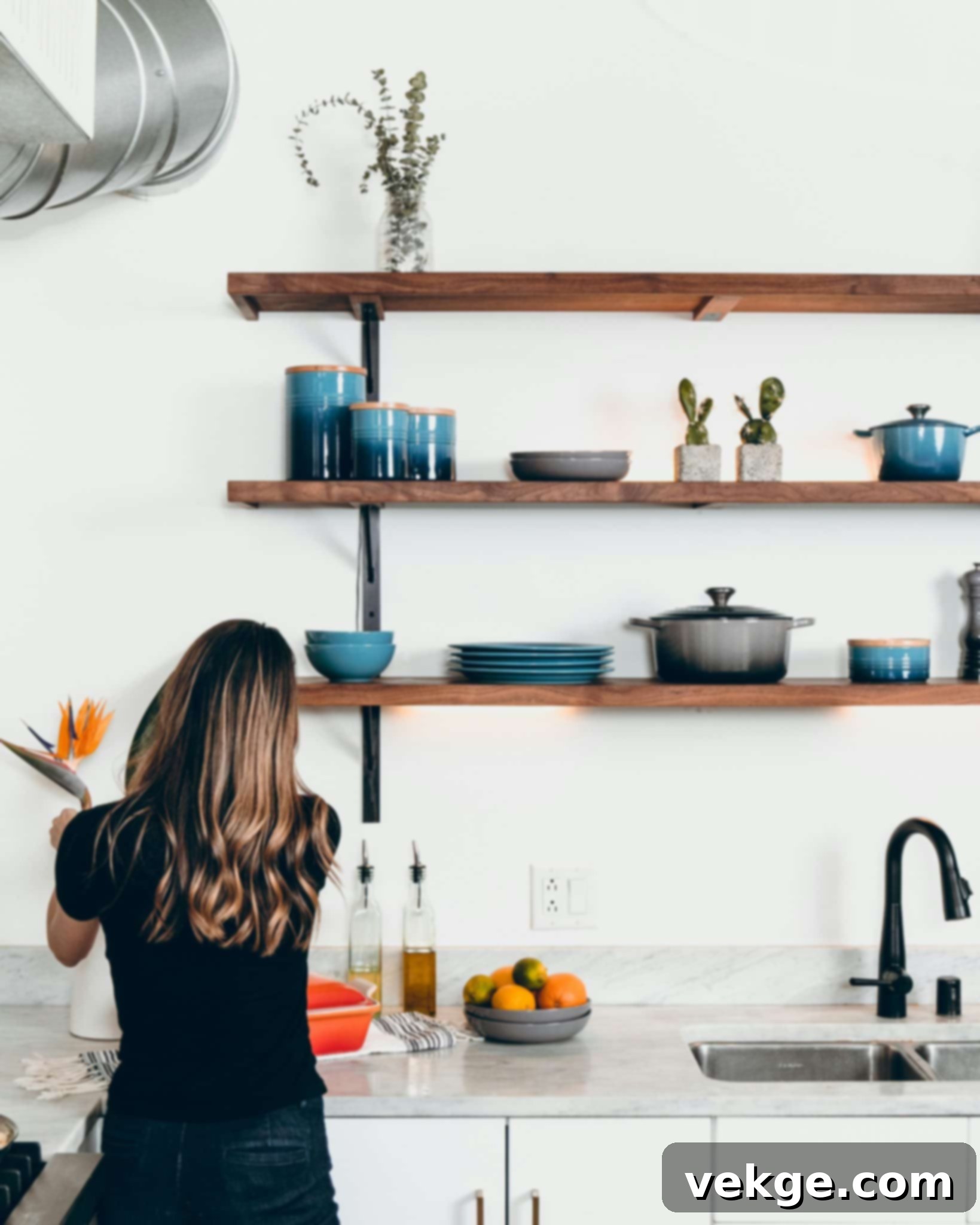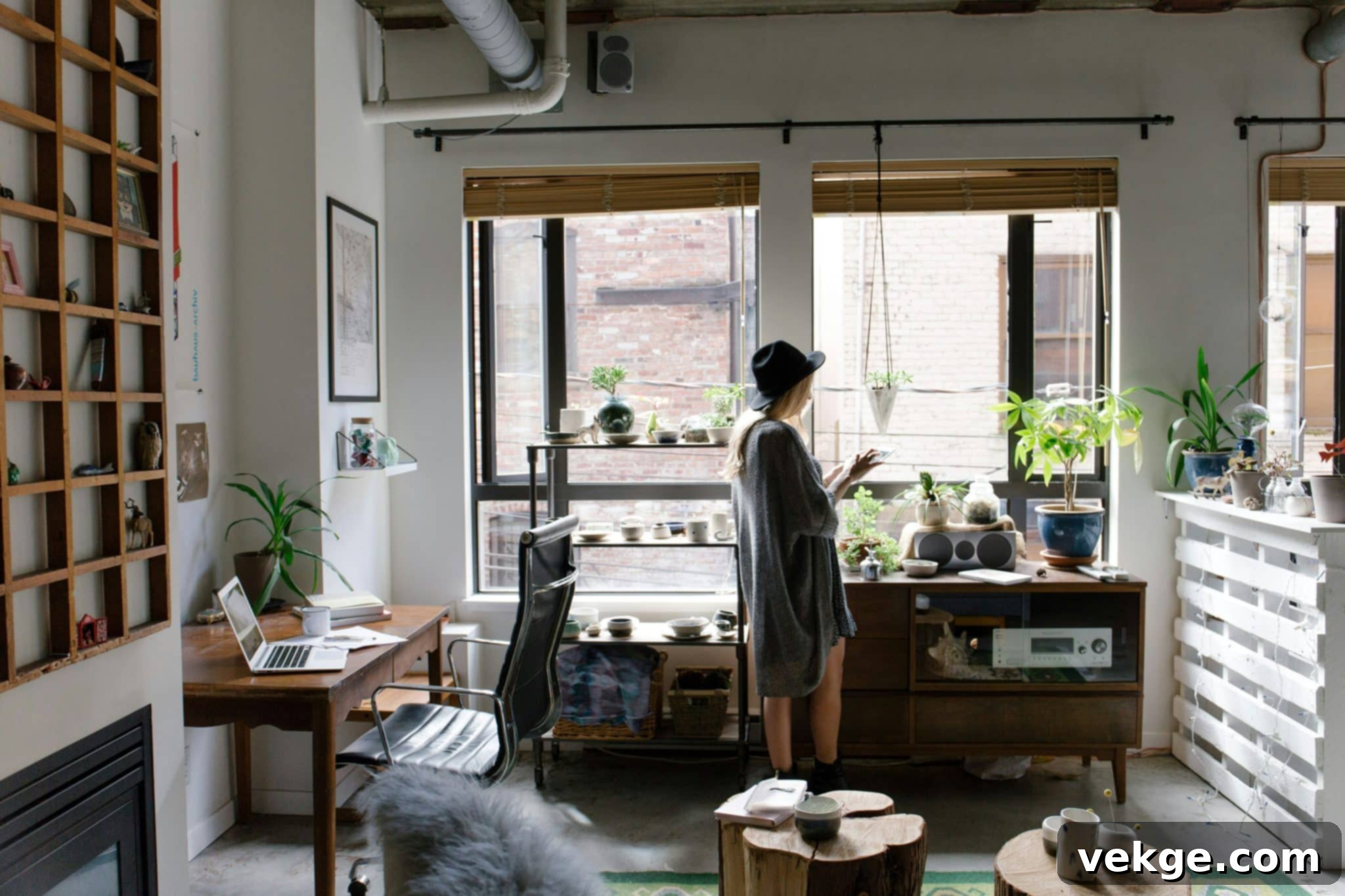From Passion to Profession: Your Complete Guide to Becoming a Home Decorator
Do you often find yourself walking into a room and instantly visualizing how you would redecorate it? If your imagination sparks with color palettes, furniture arrangements, and the art of transforming ordinary spaces into extraordinary sanctuaries, then your innate passion for home decorating might just be a calling waiting to be answered. This comprehensive guide will walk you through the exciting journey of turning your flair for aesthetics into a fulfilling and successful career, one insightful step at a time.
The world of home decorating is vibrant and ever-evolving, offering a unique blend of creativity and practicality. It’s a field where personal style meets client vision, culminating in spaces that not only look beautiful but also feel deeply personal and functional. Whether you dream of working with diverse clients, collaborating with design firms, or even launching your own decorating enterprise, the opportunities are abundant for those ready to commit to their craft.
Understanding the Dynamic Role of a Home Decorator
Imagine possessing the ability to imbue every corner of a space with warmth, personality, and an undeniable sense of style. This is the essence of being a professional Home Decorator. It’s a role that transcends mere aesthetics, blending an artistic eye with practical problem-solving to craft environments that truly resonate with beauty and functionality for their inhabitants. Unlike interior designers, who often deal with structural changes, architectural elements, and building codes, home decorators focus on the decorative aspects of a space. Their magic lies in manipulating furnishings, color schemes, textures, lighting, and accessories without altering the fundamental structure of a room.
A home decorator’s expertise is sought after by individuals and businesses looking to refresh, redesign, or simply enhance their living or working environments. From selecting the perfect shade of paint to curating a collection of art that tells a story, the decorator brings a client’s vision to life, often exceeding expectations by introducing fresh perspectives and innovative solutions. This profession is about understanding personal styles, current trends, and the timeless principles of design to create harmonious and inviting spaces.
What Are My Key Responsibilities?
Diving into the heart of a client’s aspirations, a home decorator embarks on a fascinating journey of discovery. This involves unearthing their unique style preferences, lifestyle needs, functional requirements, and the very essence of what makes a space feel like ‘home’ to them. The process is a meticulous dance of creativity, organization, and client collaboration. Key responsibilities typically include:
- Client Consultation and Vision Development: Meeting with clients to understand their needs, preferences, budget, and timeline. This initial phase involves active listening and asking probing questions to fully grasp their desired outcome.
- Concept Creation and Presentation: Developing design concepts that align with the client’s vision. This often involves creating mood boards, color palettes, fabric samples, and visual presentations to communicate ideas effectively.
- Space Planning and Layout Design: Optimizing the functionality and flow of a room by strategically arranging furniture and other elements. This ensures spaces are both aesthetically pleasing and practical for daily living.
- Sourcing and Procurement: Selecting and sourcing furniture, lighting fixtures, textiles, artwork, and decorative accessories from various vendors, ensuring quality, style, and adherence to budget.
- Budget Management: Creating and adhering to project budgets, ensuring all purchases and services remain within the agreed-upon financial parameters.
- Project Management and Coordination: Overseeing the entire decorating process, from initial concept to final installation. This includes coordinating with suppliers, contractors (if minor installations are needed), and delivery services.
- Styling and Installation: The final stage where all elements come together. This involves arranging furniture, hanging artwork, placing accessories, and adding the finishing touches that transform the space.
- Client Communication: Maintaining open and clear communication with clients throughout the project, providing updates, addressing concerns, and ensuring their satisfaction.
What Skills Do I Need?

To thrive in this captivating and colorful world, a home decorator needs a specific blend of innate talent and honed abilities. It’s more than just having good taste; it’s about possessing the tools to translate that taste into tangible, beautiful results. Here are the crucial skills:
- Creativity and Artistic Vision: The ability to envision new possibilities for a space, combine colors and textures effectively, and think outside the box to create unique designs.
- Keen Eye for Detail: Noticing nuances in color, texture, proportion, and scale that others might miss, ensuring every element contributes to the overall harmony of the design.
- Communication and Interpersonal Skills: Effectively listening to clients, articulating design ideas, negotiating with vendors, and collaborating with contractors. Strong communication builds trust and ensures projects run smoothly.
- Organizational and Project Management Skills: Juggling multiple projects, managing budgets, adhering to timelines, and coordinating various tasks and resources efficiently. This is your hidden superpower that orchestrates creative chaos into a symphony of styled spaces.
- Problem-Solving Abilities: Overcoming unexpected challenges during a project, whether it’s sourcing difficulties, budget constraints, or logistical hurdles.
- Knowledge of Design Principles: A fundamental understanding of elements like balance, rhythm, harmony, emphasis, and proportion, which are the backbone of any successful design.
- Adaptability and Trend Awareness: Staying updated with current design trends, materials, and technologies, while also being able to adapt designs to diverse client tastes and evolving market demands.
- Space Planning and Visualization: The capacity to mentally arrange elements within a space and effectively communicate these arrangements to clients, often through sketches or digital tools.
Will There Be Opportunities for Me?
The landscape for home decorators is diverse and rich with opportunities. Whether you choose to strike out solo as an independent decorator, team up with established interior design firms, or bring your flair to retail settings as a visual merchandiser or in-house stylist, the path is as varied as the palettes they play with. The demand for aesthetically pleasing and functional spaces continues to grow, driven by an increased focus on home environments and personal expression.
While a formal educational background in interior decorating or design can certainly set a strong foundation and provide valuable credentials, it’s often the unwavering passion for emerging trends, the insatiable hunger for innovative design solutions, and the sheer joy of transforming spaces that truly define success in this field. Many successful decorators began with self-study, hands-on experience, and a robust portfolio built from personal projects. The key is to continuously learn, adapt, and network within the industry.
Assessing Your Fit for a Home Decorating Career
It’s one thing to adore the idea of transforming spaces and quite another to successfully convert that passion into a thriving, fulfilling career. How do you truly ascertain if you’re cut out for the unique demands and rewards of home decorating? The journey of self-discovery starts with thoughtful self-reflection and perhaps a judicious sprinkle of real-world testing to confirm your inclinations.

First and foremost, delve into some honest self-inquiry. Do you genuinely find immense satisfaction and joy in rearranging your living space, constantly seeking ways to improve its aesthetics and functionality? Does the mere thought of experimenting with new color palettes, juxtaposing intriguing textures, and meticulously planning furniture placement ignite a spark of excitement within you? If you find yourself enthusiastically nodding along to these questions, then you are undoubtedly treading on the right path.
However, passion alone, while crucial, is rarely sufficient. A successful home decorator requires a distinct set of foundational skills – an incredibly keen eye for detail, an innate sense of creativity, exemplary communication skills to articulate visions, and perhaps most critically, the robust ability to visualize a concept from its nascent stage all the way through to its flawless execution. These are the building blocks upon which a successful decorating career is built.
Beyond personal reflection, are there more objective methods to evaluate your suitability for this dynamic career? While the design industry might not extensively rely on standardized psychological assessments to gauge creative potential, you should never underestimate the power of testing and refining your foundational cognitive skills. Platforms like Assessment-Training.com offer invaluable tools that can help sharpen crucial problem-solving and critical thinking muscles. These are indispensable for a decorator who must constantly innovate and adapt to diverse client needs and logistical challenges.
Think of these tests not merely as hurdles to overcome, but as personalized career compasses. They offer more than just a score; they provide an opportunity to hone the very analytical and strategic thinking skills you’ll need to transform spaces in ways that consistently wow your clients. Moreover, demonstrating proficiency in such assessments can undeniably give you a competitive edge and instill confidence when you’re ready to make a significant leap into the professional job market. Consider it your diligent homework before the grand exam – a bit of preparatory effort can profoundly impact your ability to prove you possess both the artistic eye for design and the astute brain for business.
Crucially, remember that the most authentic test of your readiness comes from actively putting your skills and passion into practice. Volunteer to redecorate a friend’s spare bedroom, or embark on a personal decorating project within your own home. Document every step of your process – the initial concept, the sourcing challenges, the creative solutions you devise, and ultimately, how you overcome obstacles. This invaluable, hands-on experience will teach you far more about your preparedness for a fulfilling career in home decoration than any online quiz or theoretical study ever could. It builds your practical knowledge, hones your problem-solving capabilities, and begins to form the tangible evidence for your burgeoning portfolio.
Building Your Essential Skills
Once you’ve assessed your fit, the next crucial step is to deliberately build and refine the skills necessary for success. To significantly boost your qualifications and confidence, you have several viable pathways. You might opt to pursue formal education through an interior design or decorating program at a college or specialized design school. These programs often provide a structured curriculum covering design principles, history, software, and business aspects.
Alternatively, many successful decorators are largely self-taught, utilizing the wealth of online courses, workshops, industry seminars, and comprehensive design books available. Platforms like Skillshare, Coursera, and various independent design educators offer excellent resources for learning everything from color theory to furniture restoration. Regardless of your chosen path—formal or self-directed—the unwavering focus must be on actively honing the core skills mentioned earlier: creativity, communication, attention to detail, and organizational prowess. Remember, consistent practice makes perfect, and every single project, no matter how modest in scale, presents an invaluable opportunity to learn, experiment, and grow as a decorator. Actively seek out opportunities to apply what you learn, pushing your boundaries and expanding your stylistic repertoire.
Gaining Invaluable Experience

In the vibrant and competitive world of home decorating, practical experience is not just valuable—it’s absolutely invaluable. It’s what truly distinguishes theoretical knowledge from applied expertise. Begin by actively seeking opportunities to take on small projects, initially for trusted friends, supportive family members, or even for yourself. These initial projects are critical; they not only help you start building a tangible portfolio of your work but also provide invaluable real-world exposure to common challenges, client communication dynamics, and creative problem-solving under practical constraints.
Beyond your immediate circle, consider volunteering your decorating services to local non-profit organizations, community centers, or even small businesses that might benefit from a refreshed aesthetic. Such opportunities allow you to work with diverse spaces and budgets, further honing your skills while contributing positively to your community. This can also provide unique content for your portfolio and generate valuable testimonials. Furthermore, actively networking with established professionals in the interior design and home decorating industry can open crucial doors. Attend industry events, join professional organizations, and engage in online forums. These connections can lead to apprenticeship or assistant roles, where you can learn the intricate ropes of the business directly from experienced mentors, gaining insights into client management, sourcing strategies, and project execution that cannot be taught in a classroom.
Creating a Powerful Portfolio
A meticulously curated and solid portfolio is arguably your most vital marketing tool and your ticket to attracting prospective clients. It serves as a visual resume, showcasing not just what you can do, but your unique aesthetic, versatility, and professional approach. Your portfolio should thoughtfully present a diverse range of styles and spaces, emphatically highlighting your versatility, creative problem-solving skills, and meticulous attention to detail. For each project, aim to include:
- High-Quality Before-and-After Photos: Dramatically illustrate the transformation you’ve achieved. Good lighting and professional photography make a huge difference here.
- Detailed Design Concepts: Include mood boards, color palettes, sketches, or 3D renderings that articulate your initial vision and planning process.
- Project Descriptions: Briefly explain the client’s original challenge, your design goals, the specific solutions you implemented, and the materials/elements chosen. Highlight any unique challenges and how you overcame them.
- Client Testimonials: Positive feedback from satisfied clients adds immense credibility and trust.
Your portfolio is a direct reflection of your unique style, your creative process, and your professional approach to design. Therefore, it is imperative to make sure it stands out, clearly communicating your brand and what makes you the ideal choice for a client’s decorating needs. Consider both physical and digital versions, with a strong online presence being essential in today’s market.
Launching Your Decorating Career
With your skills honed, invaluable experience gained, and a compelling portfolio in hand, you are now poised and ready to officially launch your exciting career as a professional home decorator. The initial steps involve establishing the fundamental pillars of your business, ensuring you present yourself as a credible and professional entity.
Start by meticulously setting up the operational basics of your venture. This includes choosing a memorable and catchy business name that resonates with your brand identity, designing professional business cards that leave a lasting impression, and, most critically, creating a robust and visually appealing professional website. Your website will serve as your digital storefront, a central hub where potential clients can explore your portfolio, learn about your services, and easily contact you. Ensure it is responsive, easy to navigate, and reflects your aesthetic.
Beyond your website, strategically leverage the power of popular social media platforms. Instagram and Pinterest, in particular, are incredibly powerful visual tools for showcasing your creative work, building your brand presence, and organically attracting a steady stream of new clients. Regularly post high-quality images and videos of your projects, behind-the-scenes glimpses, design tips, and engage with your audience. Consider creating a consistent content strategy to maintain visibility. Don’t forget local marketing efforts too, such as collaborating with local furniture stores, real estate agents, or contractors, and attending local home and garden shows to network and gain visibility.
Continuing Education and Professional Growth
The dynamic home decorating industry is in a perpetual state of evolution, with fresh trends emerging every season, innovative materials being introduced, and design philosophies continually shifting. To remain competitive, keep your skills razor-sharp, and consistently stay ahead of the curve, it is absolutely essential to commit to continuous education and professional development. View this as an ongoing investment in your career and your future success.
Actively seek out opportunities to expand your knowledge and refine your craft. Sign up for exciting workshops focusing on specific design styles, color theory advancements, or sustainable decorating practices. Pursue advanced certifications in areas like home staging, Feng Shui, or lighting design to unlock new specialization opportunities and significantly broaden your client base. Attend industry conferences, subscribe to leading design publications, and engage with online communities to stay informed about the latest innovations and market demands.
Expanding your service offerings is another strategic avenue for growth. Consider including specialized services such as personalized color consulting, comprehensive home staging for real estate, virtual design consultations for clients far afield, or even custom furniture design. Diversifying your expertise not only helps you attract a broader range of clients but also solidifies your reputation as a versatile and knowledgeable professional. Embrace lifelong learning, and your career in home decorating will flourish and adapt with the times.
The World of Home Decorating Awaits Your Transition
Transitioning from a heartfelt passion for home decorating into a thriving professional career is a profound and rewarding journey. It’s a path that undeniably requires a blend of unwavering dedication, continuously refined skills, an acute business acumen, and, of course, a healthy dose of innate creativity. To truly transform your dream into a tangible reality, begin by honestly assessing your aptitude and genuine interest, diligently building your foundational and advanced skills, and actively seeking out every opportunity to gain invaluable hands-on experience.
Remember, every single great designer, every acclaimed decorator, started somewhere – often with humble beginnings and a fervent desire to create beauty. With persistent hard work, unwavering perseverance, and a genuine commitment to client satisfaction, you, too, can create breathtakingly beautiful and functional spaces that genuinely make a house feel like a cherished home. So, take that decisive first step on your exciting path from passion to a truly fulfilling profession. The vibrant, dynamic, and endlessly creative world of home decorating is eagerly awaiting your unique touch!
